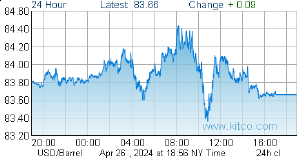After 23 drill holes, increasing success, and the emergence of a dynamic deposit model, it was no surprise that Doubleview Capital’s (DBV, TSX-V) Hat Project – and the entire Sheslay district for that matter – recently landed in the middle of Chad Norman Day’s northwest B.C. radar screen.
Just weeks earlier, the Tahltan Central Council President secured an historic agreement with Imperial Metals (III, TSX) on the operation of its Red Chris mine, the 6th new mine to open in the province since 2011.
Combined deposits in the Sheslay district could ultimately dwarf the size of the Red Chris given the drill hole success ratio to date and the abundance of targets with astonishingly similar signatures over a NW-SE mineralized corridor extending for at least 30 km.
Video Interview Helps Explain The Hat’s Immediate Promise
Below is the first in a new series of excerpts from our latest interview with Dr. Abdul Razique, Doubleview’s chief geoscientist recruited early this year. He’s a Cu-Au porphyry specialist who performed extensive and extraordinary work on one of the world’s largest such deposits (Reko Diq) with Copper giant Antofagasta.
When he says the Hat is “like an ocean of hydrothermal magnetite,” that’s not a description to be taken lightly given this individual’s knowledge and experience. Abundant hydrothermal magnetite is known to be associated with Gold-rich Copper porphyry systems.
Dr. Razique sees ample evidence that the Lisle Zone discovery area is merely a southeastern edge of one very large alkalic porphyry system, and we’re exploring that model in detail over the next couple of weeks beginning today.
Click on the link below for an informative look in less than 90 seconds at the Hat’s hydrothermal magnetite and other features that strongly suggest this property is ready to attract many fresh eyes and advance to an exciting new level.
Note: John and Jon both hold share positions in DBV.
 BullMarketRun.com
BullMarketRun.com









Great video Jon , hope you have more to come . This system is huge , no wonder Dr. Razeque is excited . The big question , what area do you suppose they are drilling ? Another hole in area B ,a step out from hole 23 or area A or E which is close.
Comment by Les — June 28, 2015 @ 9:10 am
Thanks, Les…wait until you see Part 2, in a few days. The Hat’s time and the district’s time has arrived.
Comment by Jon - BMR — June 28, 2015 @ 9:13 am
DBV , get those remaining core samples out from hole 23 and give us a news release.
Comment by Les — June 28, 2015 @ 9:15 am
To answer my own question . Dr Razeque holds the core sample from area A in his hand .I suspect they are drilling hole 24 in area A as this is also the area with the first shallow holes that were drilled and re-analyzed when Dr Razeque came to DBV.
Comment by Les — June 28, 2015 @ 9:32 am
As you drill any system, the dots should start connecting, Les, if it’s for real, and if the system is rich, you obviously should enjoy increasing drilling success as you move along. That’s what’s happening at the Hat. Each round of drilling has delivered better results and a better understanding of the geometry of the system and the controls on mineralization. What happened in Anomaly A in 2013 with the first 5 holes is that much was overlooked, and the holes weren’t drilled across the trend. You can see that on the maps. They were drilled parallel to the trend, and hit some gaps which you’ll find in any world class porphyry deposit. The geometry, angle and azimuth of the holes should have been across the trend. The geology and the mineralization are the same over a broad corridor at the Hat. Now that they know how to drill this more effectively, it’s game on. The Hat could be just 1 or 2 or 3 drill holes away from really exploding and pulling in a major. It’s a whole new game at the Hat and the district. Chad Day knows it. He worked at the Red Chris.
Comment by Jon - BMR — June 28, 2015 @ 10:16 am
Thanks for the clarification Jon , keep up the good work , it gives us all a better understanding of the system . Maybe some institutions might see the light after these next few holes.
Comment by Les — June 28, 2015 @ 10:31 am
The maps, Les, also show that the geochem anomalies strengthen to the northwest. Geochem is key to understanding the Sheslay district. This means that grades should strengthen going to the NW of the Lisle Zone which actually has a weaker geochem response. Geophysics and geology correlate with the grochem. You can start to see how this is all shaping up – the Lisle Zone is just the tip of the iceberg here. The extent of systematic NW/SE structures and shear zones is impressive, and these are what are providing the pathways for mineralizing fluids. Also structures cross-cutting NE/SW. This is a powerful system. Also, Sillitoe’s 1990 report is worth checking out as it gets into the significance of hydrothermal magnetite for a Gold-rich alkalic Copper porphyry deposit.
Comment by Jon - BMR — June 28, 2015 @ 10:38 am
Impressive so it is easy to assume that this deposit (or serie of them) expand also south of hatchau lake down to wolverine. GGI would have to do a aeromag Survey if they want to follow this trail!
Comment by Martin — June 28, 2015 @ 1:08 pm
Dr. Razique sees ample evidence that the Lisle Zone discovery area is merely a southeastern edge of one very large alkalic porphyry system, and we’re exploring that model in detail over the next couple of weeks beginning today.
If I understand well Jon, this interview has been made Tuesday June 23,this date is probably the beginning of the drilling !
Comment by Guy Delisle — June 28, 2015 @ 1:20 pm
And maybe mineralisation extend easterly to Hackett and Hat east.
Comment by Martin — June 28, 2015 @ 1:39 pm
Martin, what’s obvious is a series of stacked corridors if you will, or parallel trends, cutting NW-SE through the entire district, and within these trends (which also feature cross-cutting structures) there are large areas where the geophysics, geochem and geology correlate. So there are more deposits to be discovered…this definitely stretches south of Grizzly Central…the Hoey Zone also looks very interesting, and I don’t doubt the Hat also extends onto the Hackett….
Comment by Jon - BMR — June 28, 2015 @ 1:46 pm
Jon
how wide do you estimate the parallel trends to be?
thanks
Comment by greg — June 28, 2015 @ 2:07 pm
Greece? Wow, what do you make of the spike in overseas market….
Comment by Tombc — June 28, 2015 @ 2:13 pm
Just on the Hat, Greg, several km wide, and also long trending NW/SE. The 30 km long district corridor could easily have a width of 10 km.
Comment by Jon - BMR — June 28, 2015 @ 2:19 pm
Imagine Jon, just the liste zone is as big as red chris is! Hope either DBV or GGI won’t give out their property without huge benefit!
Comment by Martin — June 28, 2015 @ 2:19 pm
DBV , just a guesstimate, looking at areas A , ( B the Lisle ) C , D and E there could be over 3 billion tonne of ore in this deposit .
It would rank in the top ten deposits in the world , if the drill bit keeps bring up pay dirt . I would think there is a major or two laying in the weeds not to mention Antofagasta long time associate of Dr. Razique.
Comment by Les — June 28, 2015 @ 2:40 pm
Nice video Jon. When will you release part two? You got a think if DBV has the go ahead to drill, why wouldn’t GGI? If DBV hits another massive hole look out, the whole district will light up like a Christmas tree! DBV won’t be the only stock to skyrocket. GGI will follow with it’s massive land package and potential targets.
Comment by Dan — June 28, 2015 @ 3:38 pm
Jon we can see magnetite on fig.7.6 on the technical report at RedChrist mine, do you know if Dr. Razique think that is the same geology !
Comment by Guy Delisle — June 28, 2015 @ 4:14 pm
Jon,
WOW 10 km = 6.21 miles, 30 km = 18.64 miles that’s crazy…GGI’s Grizzly property covers more than half of the known 30 km mineralized corridor in the Sheslay district. Jon from looking at the maps on GGI’s website wouldn’t GGI’s Hat East look like a very good potential target or am I looking at this wrong?
thanks
Comment by greg — June 28, 2015 @ 4:45 pm
i talked to dr.razike and i asked him is the discovery or volcanics just on our property .he said yes volcanices come from dbv prperty period in the boundries of dbv…my opinion only..
Comment by russ — June 28, 2015 @ 8:27 pm
Jon , Can someone come up with some info on the ancient volcanoes , I did see some info on the DBV website a while ago. . Are they confined to DBV property ? How significant are they to a deposit of this type in proximity to a volcano ? Is Red Chris sitting on an ancient volcano ? How about GGI ? What of other mine sites of this type?
Comment by Les — June 29, 2015 @ 10:23 am
I don’t see any point whatsoever in owning anything other then DBV out of all the Sheslay players, it will blow the doors off them all, don’t get me wrong, I realize a rising tide will lift all boats, but DBV is the rising pheonix.
I might look at GGI next year with some profits from DBV
Jmho
Comment by Don — June 29, 2015 @ 9:08 pm
Another rising pheonix is V.CST (CO2 Solutions Inc.)
Just watch and see
Comment by Don — June 29, 2015 @ 9:11 pm